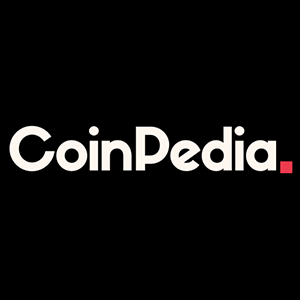Circle Stock Climbs to Top ETF Spot as Veda Secures Funding for Yield Expansion
5 min read
Two recent developments are pointing to the growing institutional interest in yield-bearing digital assets. Circle Internet Group has become the largest component of VanEck’s global crypto equity index following a sharp post-IPO stock rally, while decentralized finance protocol Veda has raised $18 million to expand its vault platform. Circle Surges to Top of VanEck’s Crypto ETF as CRCL Stock Rockets 750% Above IPO Price Shares of Circle Internet Group (NYSE: CRCL), the company behind the popular USDC stablecoin, have skyrocketed to dominate VanEck’s MVIS Global Digital Assets Equity Index (MVDAPP), a benchmark designed to track the largest and most liquid publicly traded companies in the crypto economy. As of Monday, Circle stock represents a commanding 13% of the index — up from roughly 11% last Friday — surpassing even industry mainstays like Coinbase (COIN) and MicroStrategy (MSTR). The increase suggests not only investor confidence in Circle’s explosive public market performance but also the firm’s growing strategic relevance within the broader digital asset sector. VanEck’s MVDAPP index serves as the backbone for its Digital Transformation ETF, a publicly traded fund launched in 2021 that seeks to replicate the performance of crypto-exposed companies. For inclusion, companies must derive at least 50% of their revenue from digital asset-related businesses. The ETF, which currently holds $210 million in net assets, mirrors the index with a 24-stock portfolio that includes Coinbase, Bitcoin-accumulating Strategy (formerly MicroStrategy), Japanese firm Metaplanet, and Jack Dorsey’s Block. CRCL Stock’s Monumental Rise Post-IPO Circle’s rise to the top of the index is backed by a stunning stock performance following its recent listing on the New York Stock Exchange. Less than three weeks after going public at an IPO price of $31, CRCL shares surged 167% on their first day and have since climbed over 750%, closing Monday above $263. Shares of Circle extended their rally on Monday, rising more than 11% to $263 (Source: Google Finance ) The company increased the size of its IPO ahead of the debut to accommodate robust institutional demand, a decision that now looks prescient given the stock’s exceptional rally. The gains have positioned Circle as one of the most valuable publicly traded crypto firms in the world. Behind Circle’s market dominance is its flagship product, USD Coin (USDC), a dollar-backed stablecoin that ranks second only to Tether’s USDT in terms of circulation. USDC has increasingly become a core building block in the digital economy, powering everything from decentralized finance (DeFi) applications to centralized exchange settlement layers. Momentum for USDC could accelerate even further if the pending GENIUS Act clears the final stages of legislation in the US Congress. The bill, which aims to establish regulatory clarity for stablecoins, passed the Senate with a strong bipartisan vote of 68–30 and is now under consideration in the House of Representatives. In parallel, Coinbase Derivatives and Nodal Clear announced a partnership to integrate USDC into US-regulated futures markets as eligible collateral, with implementation expected in 2026. This would mark a major step in bridging crypto and traditional finance, giving USDC a pivotal role in collateralized trading. A Bellwether for Crypto’s Institutionalization Circle’s meteoric rise reflects more than just investor appetite — it underscores how the digital asset economy is maturing in the eyes of institutional allocators. The ability of CRCL stock to outperform legacy crypto equities in such a short timeframe signals a shift in focus from pure-play exchanges or mining firms to infrastructure and utility providers. The growing dominance of Circle in VanEck’s ETF also speaks to how important stablecoin issuers have become in shaping the future of finance. As the market evolves from speculative assets to utility-driven frameworks — especially with rising regulatory clarity in the US — Circle appears well-positioned to benefit from a new wave of adoption. Circle’s success is symbolic of a larger trend: the merging of crypto-native innovation with traditional financial instruments. The company’s ascent within VanEck’s ETF portfolio not only highlights investor conviction but may foreshadow a future where regulated stablecoins like USDC serve as the backbone of global payments, trading, and settlement infrastructure. With CRCL stock continuing to gain traction and USDC’s real-world applications expanding, Circle is no longer just a key player in crypto — it’s a central figure in the future of finance. Veda Raises $18M to Fuel Cross-Chain Yield Innovation and Stablecoin Disruption In other news, decentralized finance protocol Veda has secured $18 million in fresh funding to expand its growing footprint in the onchain yield economy, as institutional and retail demand for yield-bearing digital assets accelerates across the crypto landscape. The company announced Monday that the round was led by CoinFund, with major backers including Coinbase Ventures, Animoca Ventures, BitGo, Mantle EcoFund, and GSR, among others. Veda, founded in 2024, provides the infrastructure for issuing cross-chain yield products, most notably yield-bearing stablecoins , a new category of digital assets poised to challenge traditional financial instruments like bank savings accounts and money market funds. The company’s latest raise marks a significant step in scaling its vault platform, which allows asset issuers to tokenize and distribute DeFi products across multiple chains. Veda’s vault protocol supports a range of DeFi use cases, including liquid staking tokens (LSTs), decentralized savings accounts, and synthetic stablecoins with built-in yield mechanisms. It already powers several of the largest vaults in the space, including Ether.fi’s Liquid, Mantle’s cmETH, and the Lombard DeFi Vault. According to data from DeFiLlama, Veda’s total value locked (TVL) has surpassed $3.3 billion, underscoring its rapid growth and adoption. Veda’s total value locked (TVL) has surged since the end of 2024. (Source: DefiLlama ) “Demand for dependable Bitcoin yield is high,” said Sun Raghupathi, Veda’s co-founder and CEO. “But harvesting even a modest few-percent yield is often complex and time-consuming.” To solve this, Veda has partnered with Lombard, a developer focused on liquid-staked Bitcoin using Babylon, an emerging Bitcoin staking layer. This move aims to unlock more efficient and accessible Bitcoin-based yield products — a sector that has long lagged behind Ethereum in DeFi participation due to Bitcoin’s limited programmability. Stablecoins Enter Their “iPhone Moment” The market for stablecoins is already massive — and growing. Tether’s USDT remains the dominant player with nearly $156 billion in circulation, followed by Circle’s USDC, which has a supply exceeding $61 billion, according to RWA.xyz . The stablecoin market leaderboard (Source: RWA.xyz ) But according to Circle CEO Jeremy Allaire, the market is just getting started. The addition of native yield — especially if programmable and transparent — could provide a compelling value proposition that even the best traditional finance products struggle to match. This is especially true for users in emerging markets or those with limited access to high-yield banking options. Big Names Back Veda’s Vision The $18 million raise drew not only institutional backing but also an impressive list of angel investors, including the co-founders of Anchorage, Ether.fi, and Polygon — all key players in the evolution of blockchain infrastructure and decentralized financial systems. Their participation is a strong endorsement of Veda’s cross-chain strategy and its vision for unlocking passive income opportunities across the crypto spectrum. By enabling asset issuers to create yield-generating instruments — whether backed by staked ETH, tokenized treasuries, or future innovations like liquid Bitcoin — Veda aims to become a foundational layer of the onchain financial system. Traditional financial institutions are already beginning to feel the ripple effects of this shift. Yield-bearing stablecoins threaten to undercut the appeal of low-interest savings accounts, especially in regions where inflation and currency devaluation have eroded trust in fiat-based banking.

Source: Coinpaper



